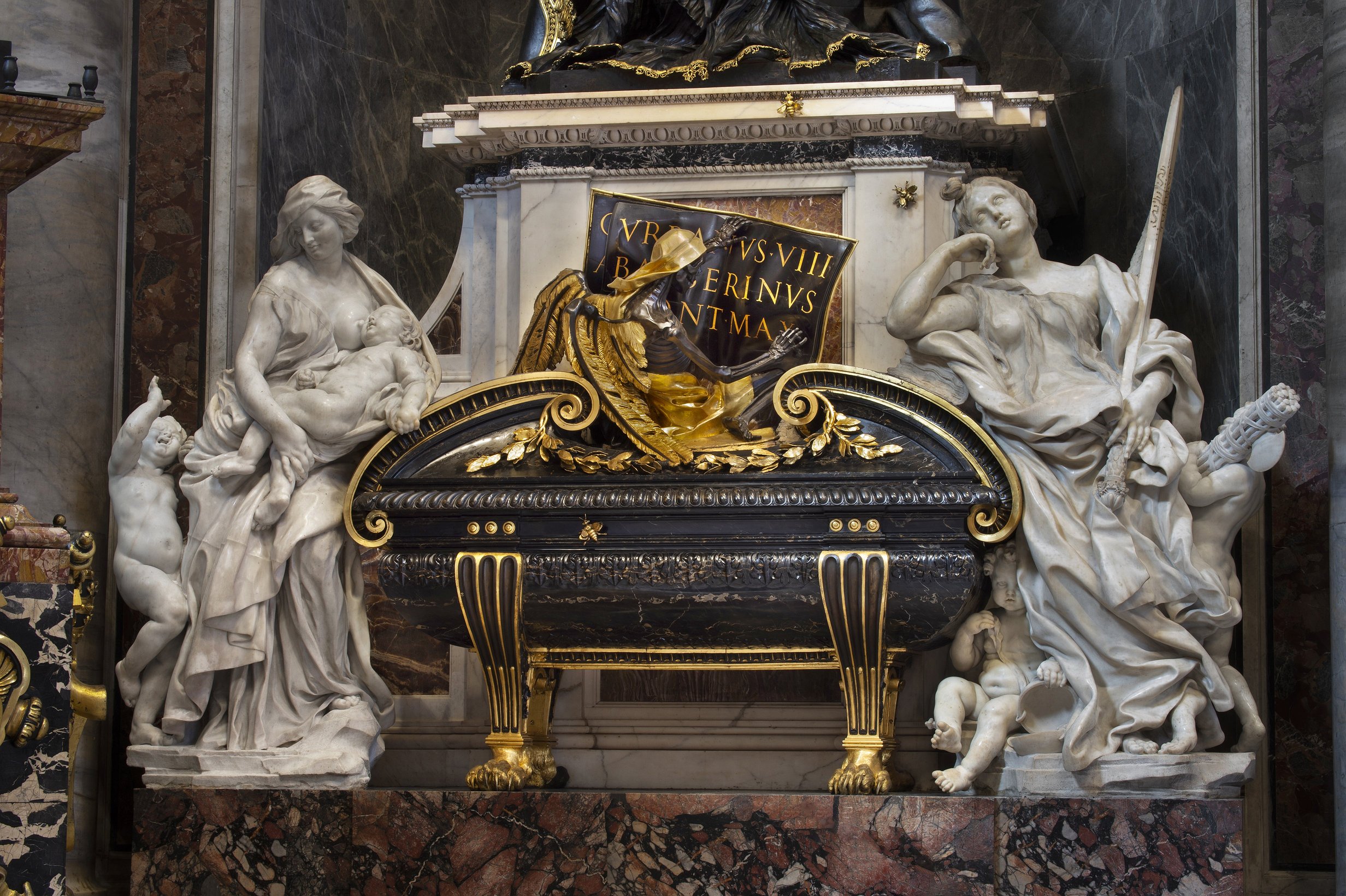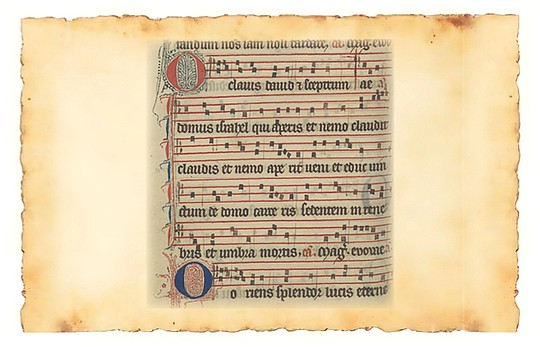Two Popes who built St. Peter's Basilica face each other fully restored
April 11, 2025 at 1:53 p.m.

VATICAN CITY CNS – Two Popes who played instrumental roles in building the world's largest Church now gaze at one another with renewed clarity in the apse of St. Peter's Basilica.
After decades of accumulating dirt, dust and grime, the funerary statues of Popes Paul III and Urban VIII were returned to their original luster as part of a broader restoration campaign inside the basilica, which included conservation work on sculpture surfaces and a new lighting installation in the Vatican necropolis below the basilica.
PHOTO GALLERY: St. Peter's Basilica restorations
Pope Paul III, who died in 1549, summoned Michelangelo to take over the basilica's design after its construction was stalled – a move that redirected and accelerated its completion. More than a century later, Pope Urban VIII consecrated the completed Church in 1626, dedicating it exactly 120 years after the first stone was laid for the new basilica on April 18, 1506, by Pope Julius II.
The restored tombs in dark bronze and shimmering gold stand opposite one another in the apse, framing Baroque master Gian Lorenzo Bernini's monumental sculpture of the chair of St. Peter.
"These works concern not only safety and hospitality, but also conservation, restoration and enhancement," said Pietro Zander, head of upkeep for the artistic heritage of St. Peter's Basilica, during a press conference presenting the restored works April 11. "They were all completed in record time for the Jubilee of Hope."
The monument to Pope Paul, sculpted by Guglielmo della Porta between 1549 and 1577, was the first papal tomb constructed in the new basilica. Originally freestanding and towering nearly 33 feet, it was reduced in scale and moved multiple times before Bernini repositioned it in 1629 to face his monument of Pope Urban VIII.
The bronze statue of the elderly Pope Paul sits above marble allegories of justice and prudence. Archival accounts as early as the late 1500s identified the figures as portraits of the Pope's mother, Giovannella Caetani, and his sister, Giulia Farnese – a symbolic merging of his personal and spiritual legacy.
The Pope Urban monument, designed by Bernini and completed between 1627 and 1647, features the Pope in bronze, right hand extended, eyes fixed on the massive canopy over the central altar which he commissioned. At its base, a gilded skeletal figure representing death inscribes his name into a dark marble book.
Below the Pope stand two women representing justice, who is holding a longsword, and charity, who is nursing a child. In 1850, the nursing woman's breast was veiled only to be revealed again during the recently completed renovation works. The veil "compromised the correct interpretation of the statue," Zander said. "Charity is shown as a mother who has just nursed one child and is turning to feed another – a tender, theologically rich image."
Both monuments required precise cleaning of marble and bronze surfaces, removing waxes and oily residues that had darkened the materials. Specialists used manual and chemical methods and applied noninvasive techniques to examine the metal alloys and understand how the materials had aged over time.
Lighting and environmental factors were also a concern in the necropolis, where the humidity levels reach 98%. New dimmable LED fixtures were developed and designed to minimize thermal impact and inhibit microbial growth. The light system extends from the descent into the excavations to the area beneath the papal altar, where the tomb of St. Peter lies.
"The light had to be not just technical but emotional," said Alberto Capitanucci, the head engineer of the Fabbrica di San Pietro, which is the office responsible for upkeep of the basilica. "It should accompany visitors and offer a space of reflection."
The restoration campaign also prompted a rethinking of visitor safety and accessibility. A new emergency evacuation plan was developed in coordination with the Italian fire department, based on 3D modeling and crowd simulation software. Stefano Marsella, head of innovation and logistics for the Italian fire department, said the simulations showed that the basilica's original entrance steps posed a safety risk in the event of mass evacuation. As a result, ramps were installed at the main entrances to ensure smoother and safer exit for all visitors.
"We realized those three steps, in the case of heavy crowding, could be a problem for everyone," Marsella said. "By improving accessibility, we improve the safety of everyone."
During the Holy Year, Cardinal Mauro Gambetti, archpriest of the basilica, said the number of visitors to St. Peter's – typically around 12 million annually – is expected to double. That surge, he said, demands not only logistical planning, but renewed attention to the spiritual and aesthetic experience the basilica offers.
The Church, he said, aims "to return the faith and love of the pilgrims and tourists who come to the basilica, and we want to do this by increasingly giving back what we are given and what has been handed down to us as an inheritance in this spiritual place – especially in the Jubilee Year."
Related Stories
Saturday, December 13, 2025
E-Editions
Events
VATICAN CITY CNS – Two Popes who played instrumental roles in building the world's largest Church now gaze at one another with renewed clarity in the apse of St. Peter's Basilica.
After decades of accumulating dirt, dust and grime, the funerary statues of Popes Paul III and Urban VIII were returned to their original luster as part of a broader restoration campaign inside the basilica, which included conservation work on sculpture surfaces and a new lighting installation in the Vatican necropolis below the basilica.
PHOTO GALLERY: St. Peter's Basilica restorations
Pope Paul III, who died in 1549, summoned Michelangelo to take over the basilica's design after its construction was stalled – a move that redirected and accelerated its completion. More than a century later, Pope Urban VIII consecrated the completed Church in 1626, dedicating it exactly 120 years after the first stone was laid for the new basilica on April 18, 1506, by Pope Julius II.
The restored tombs in dark bronze and shimmering gold stand opposite one another in the apse, framing Baroque master Gian Lorenzo Bernini's monumental sculpture of the chair of St. Peter.
"These works concern not only safety and hospitality, but also conservation, restoration and enhancement," said Pietro Zander, head of upkeep for the artistic heritage of St. Peter's Basilica, during a press conference presenting the restored works April 11. "They were all completed in record time for the Jubilee of Hope."
The monument to Pope Paul, sculpted by Guglielmo della Porta between 1549 and 1577, was the first papal tomb constructed in the new basilica. Originally freestanding and towering nearly 33 feet, it was reduced in scale and moved multiple times before Bernini repositioned it in 1629 to face his monument of Pope Urban VIII.
The bronze statue of the elderly Pope Paul sits above marble allegories of justice and prudence. Archival accounts as early as the late 1500s identified the figures as portraits of the Pope's mother, Giovannella Caetani, and his sister, Giulia Farnese – a symbolic merging of his personal and spiritual legacy.
The Pope Urban monument, designed by Bernini and completed between 1627 and 1647, features the Pope in bronze, right hand extended, eyes fixed on the massive canopy over the central altar which he commissioned. At its base, a gilded skeletal figure representing death inscribes his name into a dark marble book.
Below the Pope stand two women representing justice, who is holding a longsword, and charity, who is nursing a child. In 1850, the nursing woman's breast was veiled only to be revealed again during the recently completed renovation works. The veil "compromised the correct interpretation of the statue," Zander said. "Charity is shown as a mother who has just nursed one child and is turning to feed another – a tender, theologically rich image."
Both monuments required precise cleaning of marble and bronze surfaces, removing waxes and oily residues that had darkened the materials. Specialists used manual and chemical methods and applied noninvasive techniques to examine the metal alloys and understand how the materials had aged over time.
Lighting and environmental factors were also a concern in the necropolis, where the humidity levels reach 98%. New dimmable LED fixtures were developed and designed to minimize thermal impact and inhibit microbial growth. The light system extends from the descent into the excavations to the area beneath the papal altar, where the tomb of St. Peter lies.
"The light had to be not just technical but emotional," said Alberto Capitanucci, the head engineer of the Fabbrica di San Pietro, which is the office responsible for upkeep of the basilica. "It should accompany visitors and offer a space of reflection."
The restoration campaign also prompted a rethinking of visitor safety and accessibility. A new emergency evacuation plan was developed in coordination with the Italian fire department, based on 3D modeling and crowd simulation software. Stefano Marsella, head of innovation and logistics for the Italian fire department, said the simulations showed that the basilica's original entrance steps posed a safety risk in the event of mass evacuation. As a result, ramps were installed at the main entrances to ensure smoother and safer exit for all visitors.
"We realized those three steps, in the case of heavy crowding, could be a problem for everyone," Marsella said. "By improving accessibility, we improve the safety of everyone."
During the Holy Year, Cardinal Mauro Gambetti, archpriest of the basilica, said the number of visitors to St. Peter's – typically around 12 million annually – is expected to double. That surge, he said, demands not only logistical planning, but renewed attention to the spiritual and aesthetic experience the basilica offers.
The Church, he said, aims "to return the faith and love of the pilgrims and tourists who come to the basilica, and we want to do this by increasingly giving back what we are given and what has been handed down to us as an inheritance in this spiritual place – especially in the Jubilee Year."











